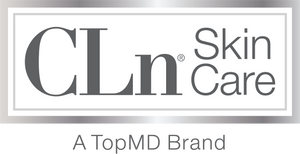
Creating the ultimate hair care regimen is a journey of discovery and an opportunity to transform not just your hair but your entire self-care experience. Hair masks can offer deep nourishment and hydration to your hair.Unlike regular conditioners, hair masks are typically thicker formulations, designed to replenish your hair and scalp. Whether it's due to environmental stressors, styling damage, or the natural texture of your hair, incorporating a mask into your routine can be helpful.
Here's some insider tips to ensure your hair reaps all the benefits.
Do's of Using a Hair Mask
- Choose According to Your Needs: Hair masks cater to a variety of hair issues. Selecting the right hair mask is crucial, tailored to address specific hair needs. For those with dry and damaged hair, an intensely rich mask is ideal. Clay-based masks are best for absorbing excess oils from a greasy scalp. Curly hair benefits from moisturizing masks rich in plant oils to minimize frizz, while dyed hair requires masks with protective and restorative qualities to maintain color vibrancy.
- Apply on Damp, Towel-dried Hair: Applying your hair mask to damp, towel-dried hair after shampooing maximizes nutrient absorption and effectiveness. While it's possible to apply masks to dry hair, especially if it's clean, wet hair is more receptive, enhancing the mask's benefits due to better ingredient absorption and cleaner hair strands. However, for oil-based masks, applying to dry hair might be preferable as water can repel oil, preventing optimal absorption.
- Be Generous and Thorough: From root to tip, ensure even application of your hair mask to ensure that every strand of your hair benefits from the mask's nourishing properties. This thorough application guarantees that the mask's ingredients, designed to hydrate, repair, and strengthen, are evenly distributed across the hair and scalp.
Don'ts of Using a Hair Mask
- Don’t Overapply: While it might be tempting to think 'more is better,' using too much product can weigh your hair down.
- Don’t Rush the Process: Give the mask time to work and do not treat it like a conditioner. Make sure to follow the directions on your specific product.
- Don’t Neglect Your Scalp: Your hair's health starts at the scalp. Make sure to choose a product with holistic benefits.
Additional Tips
- Warm Towel Trick: Wrapping your hair in a warm towel can enhance the mask's absorption. It's like giving your hair a cozy hug.
- Targeted Use: Use the mask to target specific areas that may need extra attention, such as overly processed ends or a dry scalp.
- Use Regularly: Consistency is key. Depending on your hair's condition, a weekly or bi-weekly regimen is ideal for sustained benefits.
Why CLn Hair & Scalp Mask?
For those in search of a hair mask that deeply nourishes the scalp and hair, the CLn Hair and Scalp Mask is a great choice. It’s designed with the health of your hair and scalp in mind promoting a nourishing, deep condition.
Developed with physicians and formulated with ingredients like Vitamin B5 and E, the CLn Hair & Scalp Mask can help promote your hair health. Compatible with all hair types, its creamy formula aims to revive dry or damaged hair, leaving it softer and more nourished.
Using the CLn Hair & Scalp Mask is straightforward and satisfying. After shampooing, apply a generous amount to damp hair, massage from root to tip, and let it sit for 5-10 minutes. The botanical scent provides a sensory experience, while the formula gets to work, hydrating and re-energizing your hair.
Starting A Hair Care Routine with CLn
Incorporating these tips and products into your hair care routine can help promote healthier hair with consistency. BUT the journey to healthier hair begins with the right choices. The CLn Hair & Scalp Mask , rich in nourishing ingredients and designed with your holistic hair & scalp health in mind, is a crucial step in a hair care regime
Disclaimer: Unless otherwise explicitly stated, the content on this blog, including all articles, videos, and other information, is for
general informational purposes only and is not intended to be a substitute for professional medical advice,
diagnosis, or treatment. Always seek the advice of your physician or another qualified health provider with any
questions you may have regarding a medical condition or treatment and before undertaking a new health care regimen.
Never disregard professional medical advice or delay in seeking it because of something you have read on this website.
The views expressed on this blog and website have no relation to those of any academic, hospital, health practice,
or other institution.
